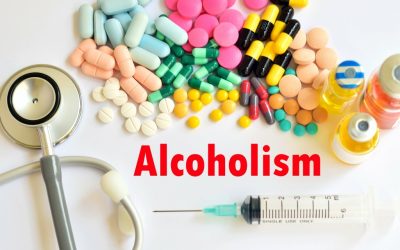Content
However, individuals in this stage of alcoholism typically have a high emotional attachment to drinking, meaning they may feel they need it “to have a good time” or to relax. The National Institute on Alcohol Abuse and Alcoholismreported that 15.1 million adults in the United States had an alcohol use disorder and only 6.7% of those suffering from an AUD received treatment. These numbers are concerning, because regardless of severity, alcohol addiction is treatable and recovery is possible.
Outpatient programs are often part of aftercare programs once you complete an inpatient or PHP program. Many support groups are geared toward people who suffer from alcoholism. These symptoms become increasingly more difficult to experience as the subject progresses through the stages of Alcohol Use Disorder. It is a problem that can take anywhere from months to several years to develop, thanks to a wide variety of factors, such as medical conditions and the amount of alcohol regularly consumed. Mental health concerns to get yourself on an upward path once again. The affects can range from dementia and intellectual functioning to debilitating conditions that require long-term care, even if a person has been sober for a period of time. It is important that someone at this stage seeks treatment for their problem.
If the person cuts back or stops drinking during this stage, they can experience side effects such as tremors and hallucinations. Help via therapy and detox can help the individual navigate these symptoms safely to begin to live without alcohol. Alcohol addiction, like many types of substance abuse, does not happen overnight. While there is some evidence that addiction has a genetic component, it is not contagious. There are some warning signs that alcoholism displays and a typical pattern of how the disease progresses. Knowledge about these may help someone identify their, or someone else’s problem with alcohol sooner rather than later. The stages of alcoholism are a helpful tool to help determine the progression of alcoholism but they are by no means a rule.
Definition: Higher alcohols (also called Fusel oil) are alcohols that have more than 2 carbons (Ethanol has two carbons CH3-CH2-OH) and thus have higher molecular weight and higher boiling point.
This 5 stages of alcoholism is characterized by cravings, loss of control, and increasing alcohol intake in order to produce the desired effect. Additionally, alcoholics typically drink in order to escape from their reality or from feelings in relation to past-traumas. Because of this, an individual’s addiction to alcohol will progress over time. While every alcoholic will have an individual experience, varying in severity, there are 5 stages of alcoholism. Valiant’s model initially received quite a bit of support due to its relative simplicity and its early utility in clinical diagnoses. Each one of these stages includes symptoms of substance abuse and addiction, but it’s only noticeable if you know what to look for. An end-stage alcoholic will experience life-threatening withdrawal symptoms when they stop drinking.
As a result, the individual will have to consume a larger quantity of alcohol to experience the desired effect. Similarly, when a person increases their alcohol intake, they also increase the risk of damage to their body. Also, one of the main characteristics of alcohol dependence is withdrawal. Alcohol withdrawal occurs when a person becomes sober from alcohol after a long period of drinking. In order to be considered a binge drinker, men must consume 5 drinks every 2 hours while women must consume 4. However, many binge drinkers will exceed this amount substantially. While binge drinking may seem harmless, this is far from the truth.
Generally, alcoholics seem to have the same kinds of personalities as everybody else, except more so. The first is a low frustration tolerance. Alcoholics seem to experience more distress when enduring long-term dysphoria or when tiresome things do not work out quickly. Alcoholics are more impulsive than most.
With the combination of professional alcoholism treatment and sobriety maintenance, recovery is possible for anyone. Once an individual begins to drink more frequently, they have entered the second stage of alcoholism. During this stage, drinkers are typically still drinking solely in social settings. However, they need to consume more alcohol in order to produce the same effect they experienced in the beginning.
Alcohol can be damaging to a person’s motor skills, reflexes, response time, short-term memory, and capacity to think correctly or logically. Inhibitions are weakened, escalating the risk of engaging in unsafe sexual activities or possibly becoming a victim of crime or violence. Increased drinking begins when the occasional drink with friends becomes a regular activity for yourself.

Most people have their first taste of alcohol when they are teenagers, but some may try it at an even younger age. At this point, they may decide whether or not they like the taste or how drinking makes them feel. So, while some people may take a long time to progress from stage one to five, other people may do so quite quickly.

admin